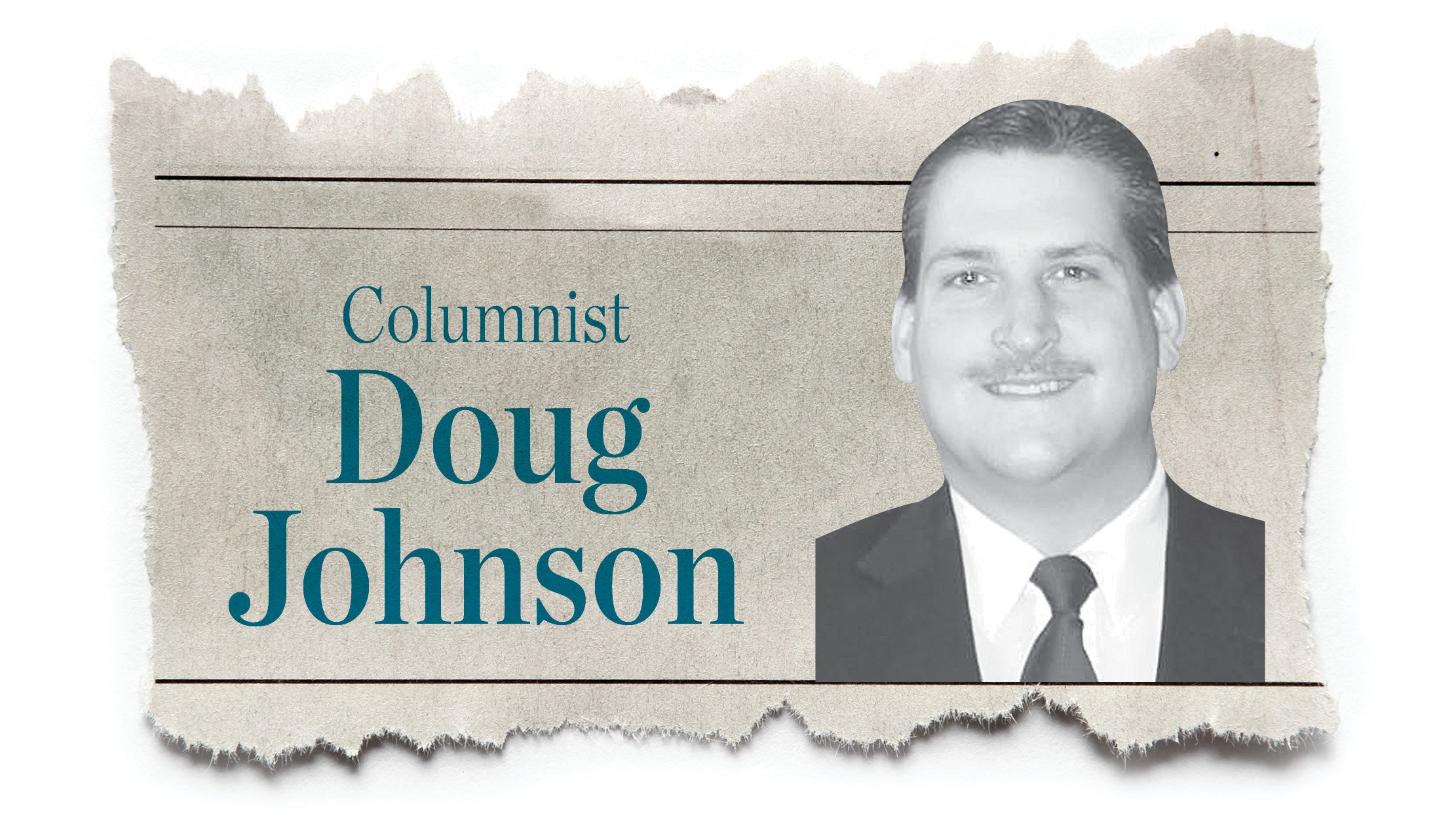What’s on your water bill?
Published 12:00 am Sunday, March 21, 2010
Each month it lands in residential mailboxes across Ironton.
With blue and black lettering, the city’s water bill spells out how much each household will be charged for not only the water they use to wash clothes or flush toilets but also for various other city services.
Six other fees and charges come along with the water bill. Those charges include administrative, sewer, garbage, fire, municipal and storm utility fees.
As many residents have probably noticed, the rates for the water usage as well as some of the other charges have increased this year.
Water
In January, the city increased the fee for water usage from $4.70 to $5 per 1,000 gallons.
The increase was part of an ordinance city council passed Feb. 26, 2009. That same ordinance mandates that the water rate will again increase — next time to $5.30 per 1,000 gallons — in January 2011.
To compare Ironton to other water services, the City of Portsmouth charges residents $17.09 for the first 1,000 gallons of water.
For 2,000 gallons, Portsmouth charges about $18, and for 3,000 gallons the price is around $20.
Hecla Water association customers pay about $17 for the first 1,500 gallons. Anything over 1,500 gallons is $8.50 per 1,000 gallons.
Ironton Mayor Rich Blankenship said the recent increase is needed to keep up with the increasing cost of water production.
“Each year the chemical (prices) go up to produce our water,” Blankenship said.
Leaks in the water system, too, are costly for the city and difficult to predict.
These leaks require manpower and resources to correct.
“Some have been leaking for many years,” he said. “Some of the leaks it’s not obvious where the origin is.”
Administrative fee
Besides the water usage rate, there is a $2.50 flat fee tacked on to cover administrative costs.
The city has budgeted about $150,000 in revenue from the administration fee fund for the 2010 fiscal year.
The fee contributes to the city’s nearly $2 million water fund, which pays for employee salaries and other expenses such as the nearly $12,000 cost of mailing the water bill to residents.
Municipal Safety Fee
The city has charged an $8 municipal fee since 2006. The fee, which was originally established for a 24-month period, was renewed at the same rate in 2008 and most recently in January.
The city has budgeted about $530,000 in revenue from that fee for the city’s general fund.
That fund pays for a variety of expenses including the council, mayor, municipal court, finance, and police departments.
Even with the municipal fee, the police department lost two vacant positions this year.
Blankenship said he would have liked to expand the department but the money just wasn’t there.
“We planned on hiring two new officers and now we can’t,” Blankenship said.
Besides officers, police training is also important, he said.
“Law enforcement changes,” Blankenship said. “You have to keep up with training.”
Police Chief Jim Carey said while the municipal fee does not greatly affect the overall budget of the police department, more positions would have been cut had the municipal fee not been renewed this year.
City employees received a $.40 per hour raise last year. This year the city’s union workers received a $.40 per hour raise.
The mayor has not asked city council for raises for non-union employees this year.
Garbage Fee
The sanitation fee was increased from $10.50 to $11 per household each month beginning in January. The fee had been $9.50 until an ordinance last year raised it to $10.50. The same law mandates that the fee will be raised again to $11.50 per month in January 2011.
Before the ordinance in 2009, the garbage fee was last increased in 1998.
“The rate of the sanitation did not increase, but fuel costs increased, the landfill costs increased and employee salaries and benefits increased,” Blankenship said. “You can see that this is not a big increase in the garbage fee.”
Blankenship compared the city’s sanitation service to that of private companies elsewhere in the county.
His mother, for instance, lives in the Deering area and pays a private sanitation company $20 each month, he said. The private company accepts only a certain amount of garbage bags.
At $11 and with no restrictions on how much garbage is picked up from each residence, the city’s service is better than most private companies, the mayor said.
“What the city offers outweighs these private entities one hundred to one,” Blankenship said.
Besides curbside service, the city also accepts trash twice a week at the city garage. Ironton residents must present their water bill as proof of residence.
Items like refrigerators, washers and dryers are regularly accepted. Between the time it takes city employees to monitor the collection and the costs for transporting the items to the dump, the service is costly to the city, Blankenship said.
The city is considering ways to reduce the cost of the collection to the city. For instance it may reduce the amount of time each week that the materials are collected.
“That is a major cost to the city,” Blankenship said. “I think it’s a great service but we have to be realistic.”
Last year the city paid Rumpke about $274,000 in landfill costs.
Sewer
At $5 per 1,000 gallons, the city’s sewer fee pays for chemicals and the process required for the sewer water to be treated according to EPA requirements. The fee was last increased in 2004.
Improvements are being made to the system. The city is currently undergoing work to reline the sewer pipes.
Storm Utility
The city’s storm utility fee is $2 per 1,000 gallons of water used. It funds the city’s sewer separation project. Mandated by the Environmental Protection Agency, the project will separate the city’s storm and sanitary sewers over the next 16 years.
The mandate, along with a fine of about $100,000, followed years of the city neglecting the EPA mandate.
“When I came in, I said we have to deal with this,” he said.
The mayor petitioned state officials for funding for the project to no avail.
“The Ohio and federal EPA have not funded it,” Blankenship said. “What I’ve done for the past three years is apply for funding. We’ve pushed and tried to talk to officials and stress the importance (of the project). I don’t agree with the federal government saying ‘you have to do this but we aren’t going to pay for it.‘”
The city has received about $600,000 in state funds over the past two years for the $18 to $20 million project.
The sewer separation is currently in the beginning stages. Sewer separation plans are being designed for North Ironton.
Fire Fee
In January, the city’s fire safety fee increased from $4 per household to $4.75. The increase is because of an ordinance that passed Nov. 25, 2002. The law mandated that the fee increase by $.75 this year, $.85 cents in 2020 and $1.05 in 2030.
The rising fee is meant to pay for the rising costs associated with safety equipment for the fire department.
“It had multiple reasons,” Chief Tom Runyon said. “It was set up to finance a new fire department building and to finance manpower and equipment.”
The department moved into its current building at 526 S. Fourth St. about six years ago. Before the new building, the firefighters were in building that was more than 100 years old.
“It was not insulated and was deteriorated to the point that the brick walls were cracking,” Runyon said,
Besides the fire station, personal protective gear for the firefighter is also purchased out of the fund.
The gear gets pricey. When Runyon started in the fire department, the cost for personal protective gear including a fire coat and pants, a set of gloves, a helmet and boots was $500 to $600.
That same gear today runs close to $2,000, Runyon said.
“We like to have the best for our employees but we still try to maintain a reasonable budget,” Runyon said. “We buy reasonable equipment. We don’t buy the most expensive.”
The city anticipates $280,000 in revenue from the fee.
Besides the equipment, air packs for the firefighters now run over $5,000 for each.
Then there’s other equipment like fire hoses, gear for venting smoke, and the tools for extracting entrapped car accident victims.
“There’s a large mass of equipment that you have to have,” Runyon said. “It’s not just driving a little red truck. There’s a lot more than meets the eyes.”





